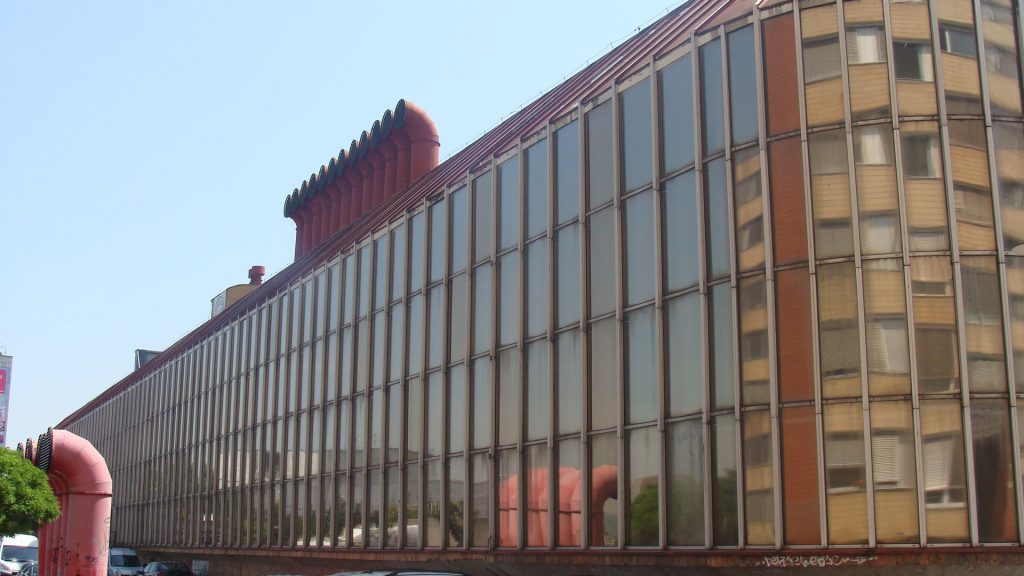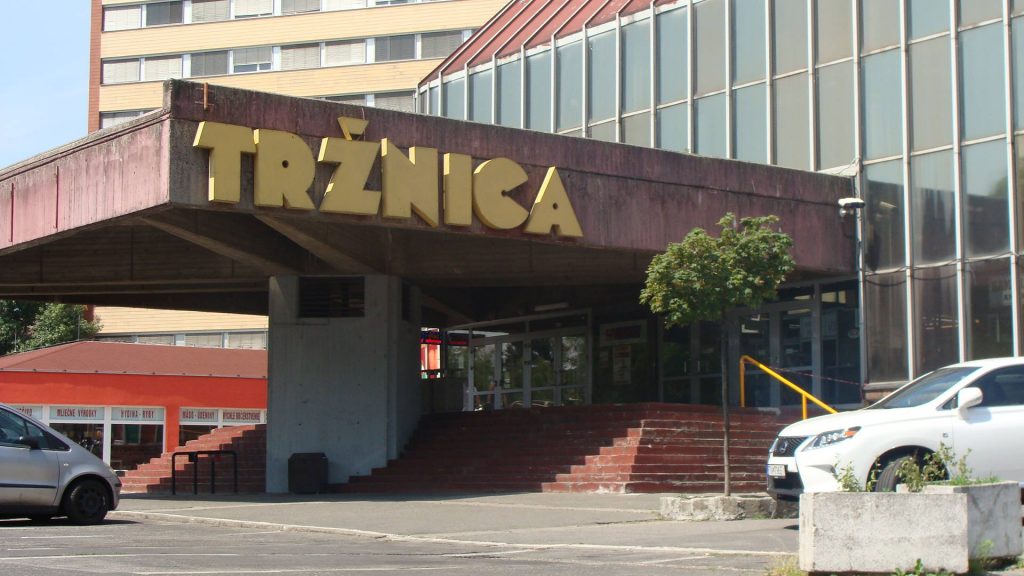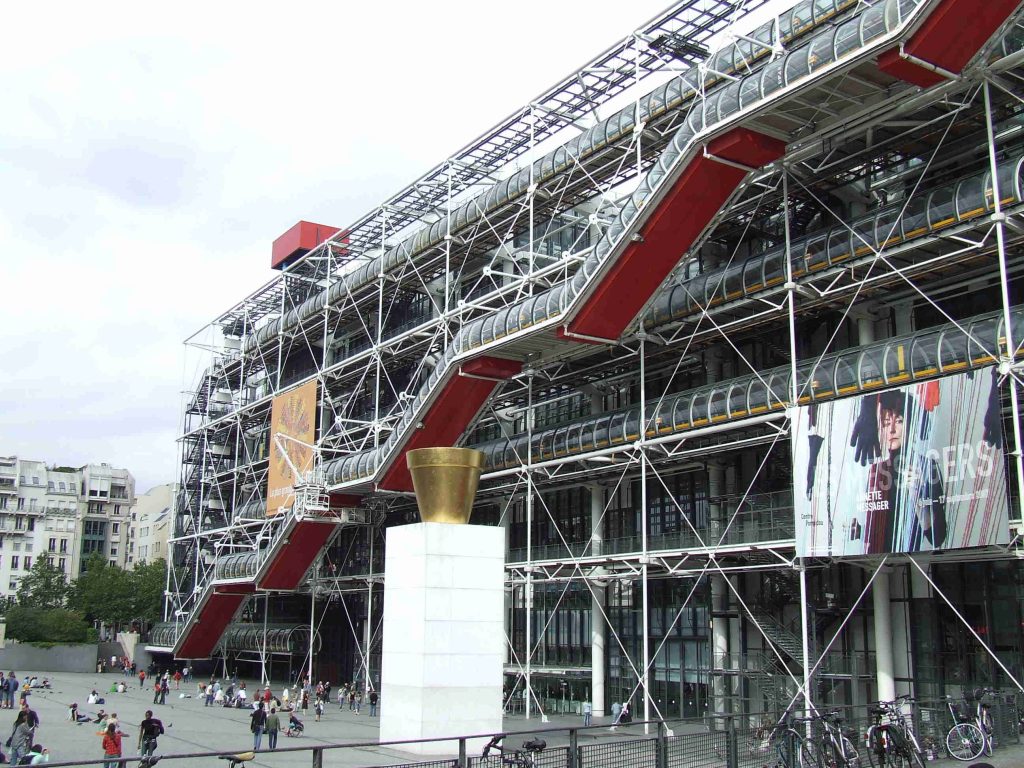One of the dominants of the transport hub at Trnavské mýto is the building of the so-called New market. The unique appearance of the building is completed by eye-catching chimneys with a deep red coating which are the outer outlets of the air-conditioning piping running through the entire interior part.

In the 1980s, Bratislava needed a new covered market building because the original, so-called The old market, in the Old Town belonged to television which had its studios there. The construction site of its successor was not chosen at random – the former central market stood nearby. The construction was undertaken by the architect Ivan Matušík. At that time he had experience with the construction of department stores throughout the country. In Bratislava, the Slimák department store and the complex of buildings of the Kyjev hotel and the then Prior department store on Kamenné námestie are especially well-known.

When designing the market, the architect thought mainly about its purpose and adapted the roughness of the mold and material used, such as the structure of raw concrete and ceramic tiles, which had to withstand the busy operation of the market. The overall greenhouse appearance of the building, in turn, refers to the products sold, fruits and vegetables, and their cultivation. He was also inspired by the trend of so-called high tech architecture which appeared in the world in the 1970s. He likes machine aesthetics and highlighting the technical and industrial elements of buildings which are sometimes hidden under the facade.
The inspiration in this case was probably the Paris Centre Georges Pompidou, largely completed just a year before the start of the Bratislava New Market project.

In the entire building Matušík used mainly natural colours, gray concrete similar to stone complements the dark wood railings on the floor and matt ceramic tiles on the walls and floor. All the more the aforementioned deep red ducts of air conditioning as well as the bright yellow metal vegetable stalls shine here. Despite its uniqueness, the building is not given much attention in the list of monuments and no money has yet been found for its more extensive reconstruction. Recently, however, the initiatives of contemporary artists have drawn attention to this non-traditional construction. In 2014, the festival of contemporary art Tutti frutti took place on its premises, and in 2015 it became part of the Tržnicabojart project by the internationally renowned Czech artist Kateřina Šedá.
